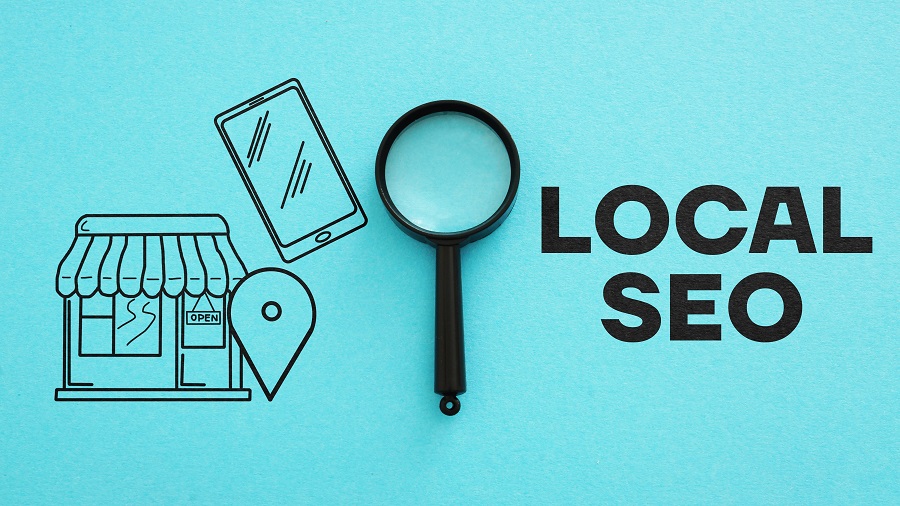14 Nov

The internet has changed the way we shop. Whereas we once perused aisles and asked clerks for help, now we turn to Google to find what we need. This shift underscores the importance of search engine optimization (SEO) in eCommerce. Your online store’s visibility hinges largely on its Google rankings.
Luckily, several proven SEO techniques and Google ranking factors can help you boost your store’s position in results pages. By optimizing keywords, content, and technical elements, you can inch your way up in rankings and drive more organic traffic to your site. It takes time and effort, but the payoff for higher Google rankings is well worth the investment.
Let’s explore some of the most effective ways to improve your eCommerce SEO and boost the store’s visibility on Google. With smart strategy and persistence, you’ll be on the road to higher rankings and more customers.
Choose Your eCommerce Keywords Wisely
In the world of SEO for online stores, keywords are king. The terms and phrases customers search for offer a window into their intent. Optimizing your site for relevant keyword targets helps Google understand your eCommerce business and the value you provide. Ranking for the “right” keywords leads to traffic that converts.
So where do savvy online retailers begin? Start with core product and category terms. Look at your existing content and see which ones come up naturally based on what you sell. Expand the list by researching industry terminology and buyer keywords. Use Google’s Keyword Planner and other tools to find monthly search volumes and suggested related keywords.
As you build your eCommerce keyword list, consider:
Intent – Does the keyword imply shopping intent? “Running shoes” is better than just “shoes.”
Specificity – More specific terms like “men’s waterproof hiking boots” are easier to rank for than vague ones.
Competition – Ranking gets harder as search volume and competition increase. But some tough keywords are worth pursuing.
Relevance – Keep keywords closely tied to your products, brand, and target audience. Stray too far and results won’t convert.
A strategic mix of short- and long-tail keywords, navigational terms, and keywords that convert is ideal. Just be sure to focus on ranking for terms that bring qualified traffic. With the right keywords in your pocket, you’re ready to optimize your site.
Optimize Your Product Pages
Your product pages are the heart of an eCommerce site. This is where you can directly connect searchers with items to purchase. That’s why product page SEO should be a top priority.
Make sure each product page includes:
- A unique title with the target keyword, like “Handcrafted Maple Coffee Table”.
- An H1 headline that matches the title.
- A product description optimized for the keyword. Include attributes and details.
- Alt text for all images with the keyword.
- A unique URL with the keyword if possible (www.store.com/maple-coffee-table).
- Breadcrumb navigation to help indicate the page category.
- As many relevant, semantic keywords as naturally possible throughout the content.
These on-page elements help search engines understand your product and its purpose on the site. Plus, they establish keyword relevancy and improve click-through rates. Just be sure the content reads naturally and provides a good user experience.
Optimizing individual product pages might seem tedious. But this attention to detail is precisely how high rankings are achieved. So put in the work on your site’s most important pages.
Craft Compelling Product Category Pages

For retailers with a large inventory, product category, and subcategory pages are a necessity. They allow customers to browse and refine their search within a particular segment of your offerings. Just like product pages, category pages should be optimized for target keywords.
Category page SEO is crucial for:
- Helping searchers easily find the type of items they seek on your site
- Organizing your products into a navigable site architecture
- Driving qualified organic traffic deeper into your catalog
Optimize category pages for their respective category keywords. For example, a “sofas” page would target “sofas”, “couches”, and related terms. Include:
- A unique title and H1 headline with the keyword
- Descriptive copy about the category
- List of subcategories and related products
- Links to your best product pages
- Images, videos, or guides related to the category
- Sidebar with refinements to drill down (size, color, price, etc)
- Breadcrumb navigation pointing back to the parent category
Category pages act as gateways to guide customers to what they want. The better optimized they are, the more value they provide searchers. Invest time in these pivotal pages on your site.
Produce Fresh, High-Quality Website Content
Content reigns supreme in SEO. Google wants to surface sites with informative, engaging content that meets search intent. eCommerce retailers need an ongoing content strategy, not just standard product descriptions.
Aim for regular publication of blog posts, guides, and other content that adds value for your audience. Content that ranks well typically has:
- A focus on in-demand topics related to your niche. Research keyword volumes, competition, and search trends to identify promising subjects.
- Compelling headlines that draw readers in.
- Thorough, well-researched information that answers questions and establishes your expertise.
- Natural integration of relevant keywords, especially in headers, meta descriptions, image alt text, and the URL.
- Links to related products or category pages to guide customers.
- A friendly, readable tone that visitors enjoy.
- Strong visual elements like infographics, charts, photos, and videos to demonstrate concepts.
- Proper formatting for scannability – section headers, short paragraphs, bulleted lists, etc.
Google cares about the overall quality and usefulness of content. So aim higher than just padding your site with meaningless keyword-stuffed blog posts. Create resources customers genuinely want.
Tie content directly to your product offerings whenever possible. This content provides search value while also acting as a sales funnel. Over time, regularly publishing great content will pay dividends in your SEO and visibility.
Don’t Neglect Site Speed and Mobile Optimization
Technical website factors also impact and can improve Google rankings. Two big ones are site speed and mobile optimization. Google wants to send searchers to sites with fast load times across all devices.
Speed up your site with changes like:
- Optimizing images
- Minifying CSS and JavaScript
- Reducing redirects
- Using caching and compression
- Upgrading to faster web hosting
- Removing unnecessary plugins or heavy codes
Test your overall site speed and address any sluggish pages. Strive for load times under two seconds.
Mobile optimization along with eCommerce SEO techniques is equally key today. Ensure a responsive design and mobile-friendly checkout. Audit for issues on mobile and fix them. By providing a fast, seamless experience on phones, you’ll fare better with Google.
Embrace Local SEO for Physical Stores

For eCommerce brands with brick-and-mortar stores, local SEO is mandatory. Optimizing for location-based searches helps customers find your nearby outlets.
Tactics like accurate Google My Business listings, local keywords, and unique store content make stores stand out in “near me” search results. The benefits can be big. 49% of shoppers who search locally on mobile visit a store within one day.
Run local PPC ads to raise awareness of your stores. Be sure your locations are integrated into the website experience. Publish store-specific content like events calendars and highlight unique inventory.
There’s an immense opportunity to drive foot traffic by appearing prominently in local search results. So don’t overlook optimizing your online-to-offline strategy.
Track Progress and Continuously Improve
With all your optimization efforts, how will you know what’s working? SEO analytics are essential for gauging your progress.
Install Google Analytics and Google Search Console. Monitor key metrics monthly like:
- Rankings for target keywords
- Organic traffic growth
- Click-through rates from Search
- Goal conversions from organic traffic
Study your analytics and double down on tactics that move the needle. Adapt your approach over time based on performance. SEO is never “one and done” – you must continually optimize and innovate.
If all these search engine optimization tips seem too time-consuming and complex, there is another option to drive customers to your eCommerce store: implementing an intelligent point-of-sale system. Rather than playing the endless Google rankings game, use technology designed to directly put your products in front of interested shoppers. Sign up FREE for Hana Retail today!





